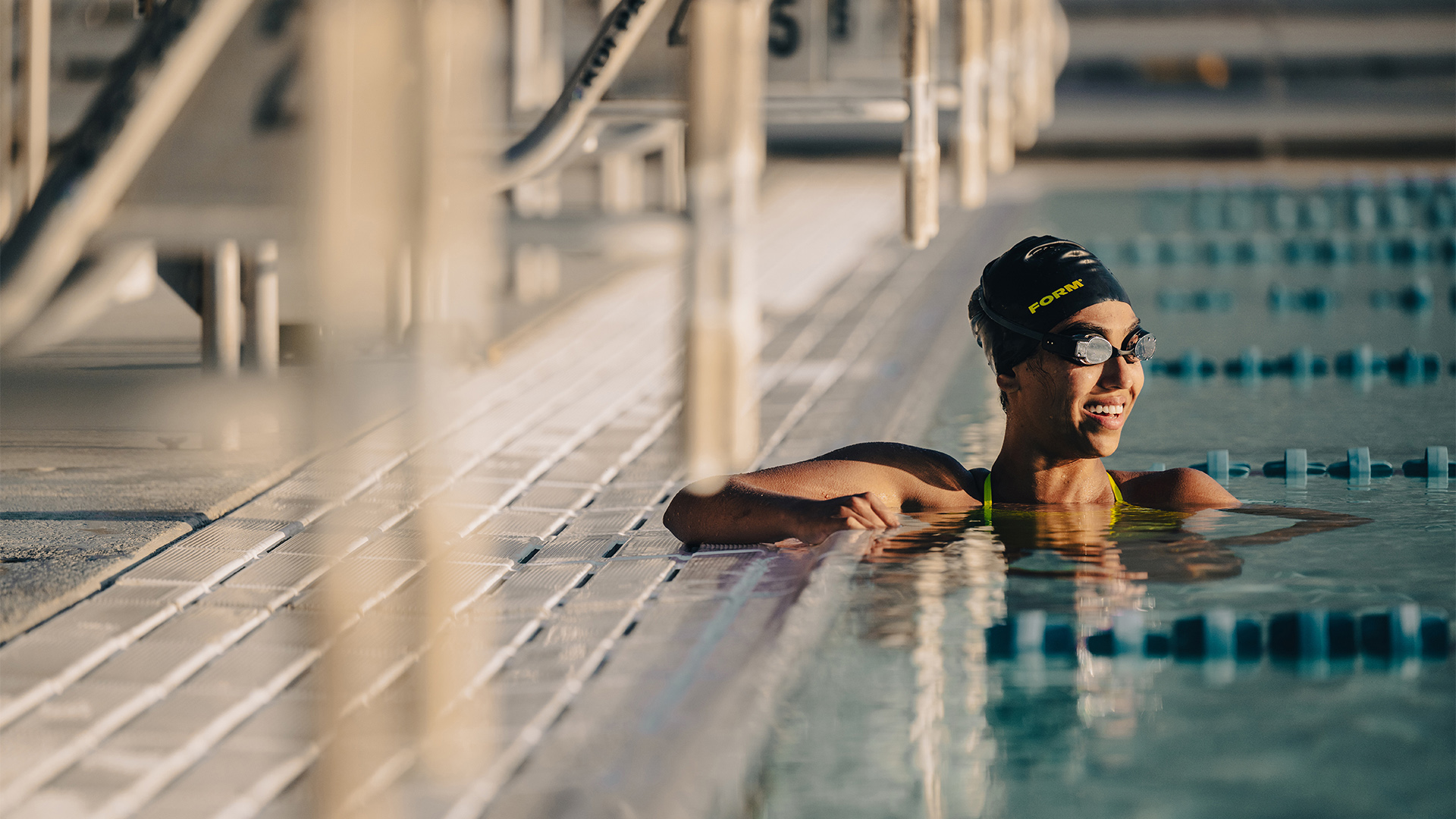
According to the CDCP, swimming can decrease the risk of chronic illnesses, slash the probability of heart disease and diabetes, as well as boost mood and decrease anxiety.
But perhaps the biggest takeaway is that one study cited that participants reported enjoying water-based activities more than they did exercising on land. With all that in mind, swimming could be the perfect boost to your mood and physical fitness in 2024.
Let’s face it, with the winter weather growing increasingly hostile to outdoor activities, such as running and cycling, as well as the days growing ever shorter, jumping in a (hopefully) warm pool in the morning will prove a positively healthy way to start the day.
We’ve been speaking with Brian Johns, an expert swim coach and Head of Swim Coaching Science at FORM, to get his insight on the best way to approach a new swimming fitness routine.
But perhaps more importantly, the best way to eke the most out of every swim session is to ensure you aren’t simply splashing about and performing pencil jumps from the side but actually getting fitter, stronger and more mentally resilient in the process.
“Swimming is a very friendly activity for the body. Being in an effectively zero gravity environment unloads the pressure on a lot of muscles and joints (back, hips and legs) that get a lot of high impact in our work and other activities,” Brian explains
“With swimming, you can still get the same aerobic benefits as running, without the hard grind of impact on the ground. For many, swimming is a great way to cross-train to avoid injuries in their primary sport,” he adds.
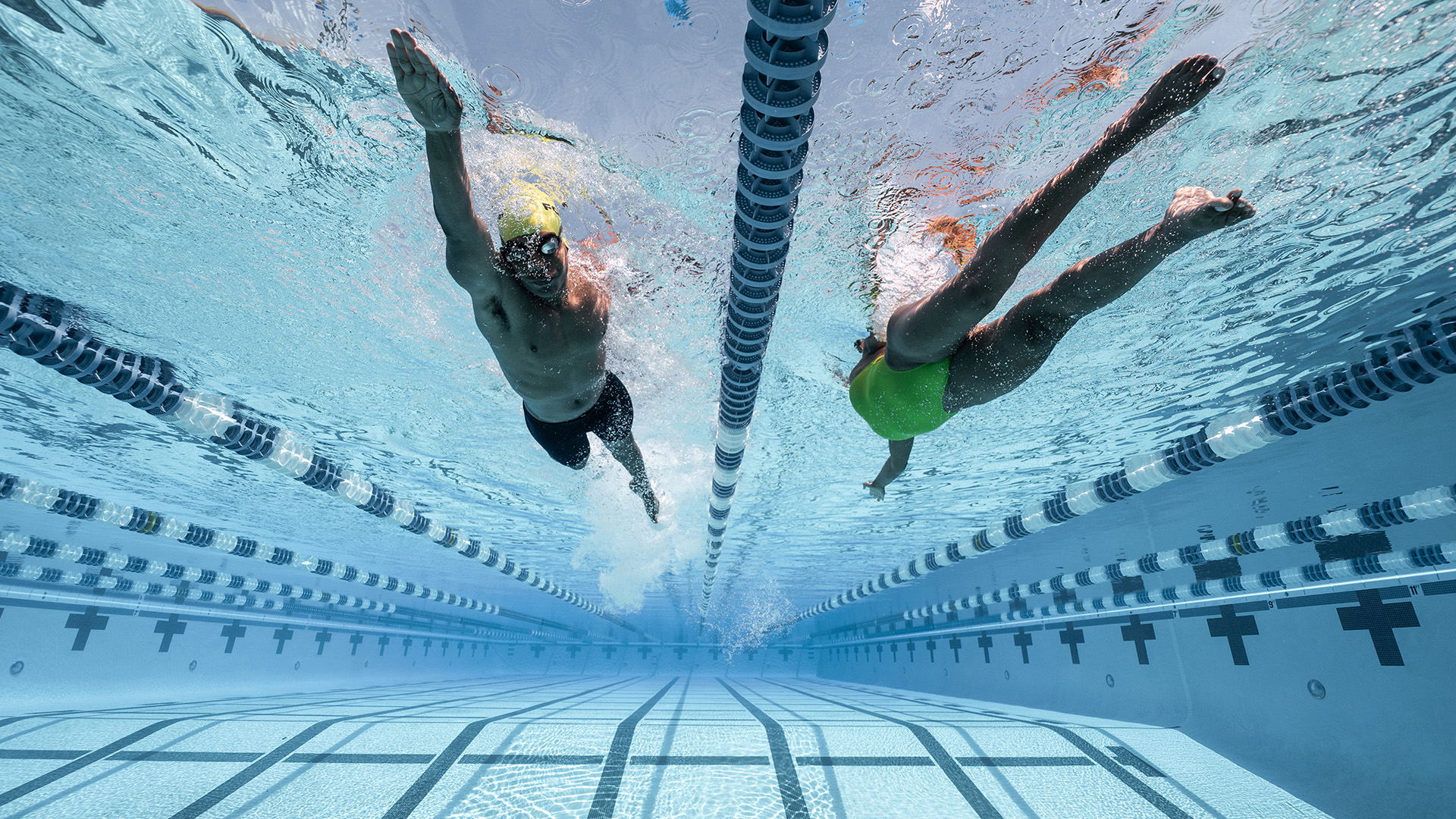
Turn your pool session into a proper workout
“More so than running or cycling, swimming depends on effective interval training to ensure that you are getting the most out of your workout,” Brian explains. “Whereas you might go for a 30-minute run and feel accomplished, swimming for 30 minutes straight is much more difficult, particularly for those without a deep background in swimming,” he adds.
In order to turn a pool session into a great workout, Brian suggests you do the following things:
- Identify how much time you are going to dedicate to the workout. That could be just 30 minutes, but if you have more time, 45 minutes is a great starting point.
- How much of that time are you going to dedicate to each set? We could start with 10 minutes for warm-up, 15 minutes to address your main goal and 5 minutes for your warm-down.
- Build a set for each portion of the workout. For a typical swimmer that’s swimming at a 2:00/100m pace
For example, your warm-up could be 8 x 50m @ 1:15, making the even 50m lengths faster than the odd ones. This shoudl atke around 10 minutes. Then, your main set with an Aerobic Fitness Focus would be 4 x 150 @ 3:45 with a steady, moderate effort, which should last around 15 minutes. Finally, for cool down, do 2 x 100m @ 2:30 at an easy, feel pace for another five minutes.
“By giving your pool session a bit more structure you will be able turn it into a more effective workout in the water,” Brian says.
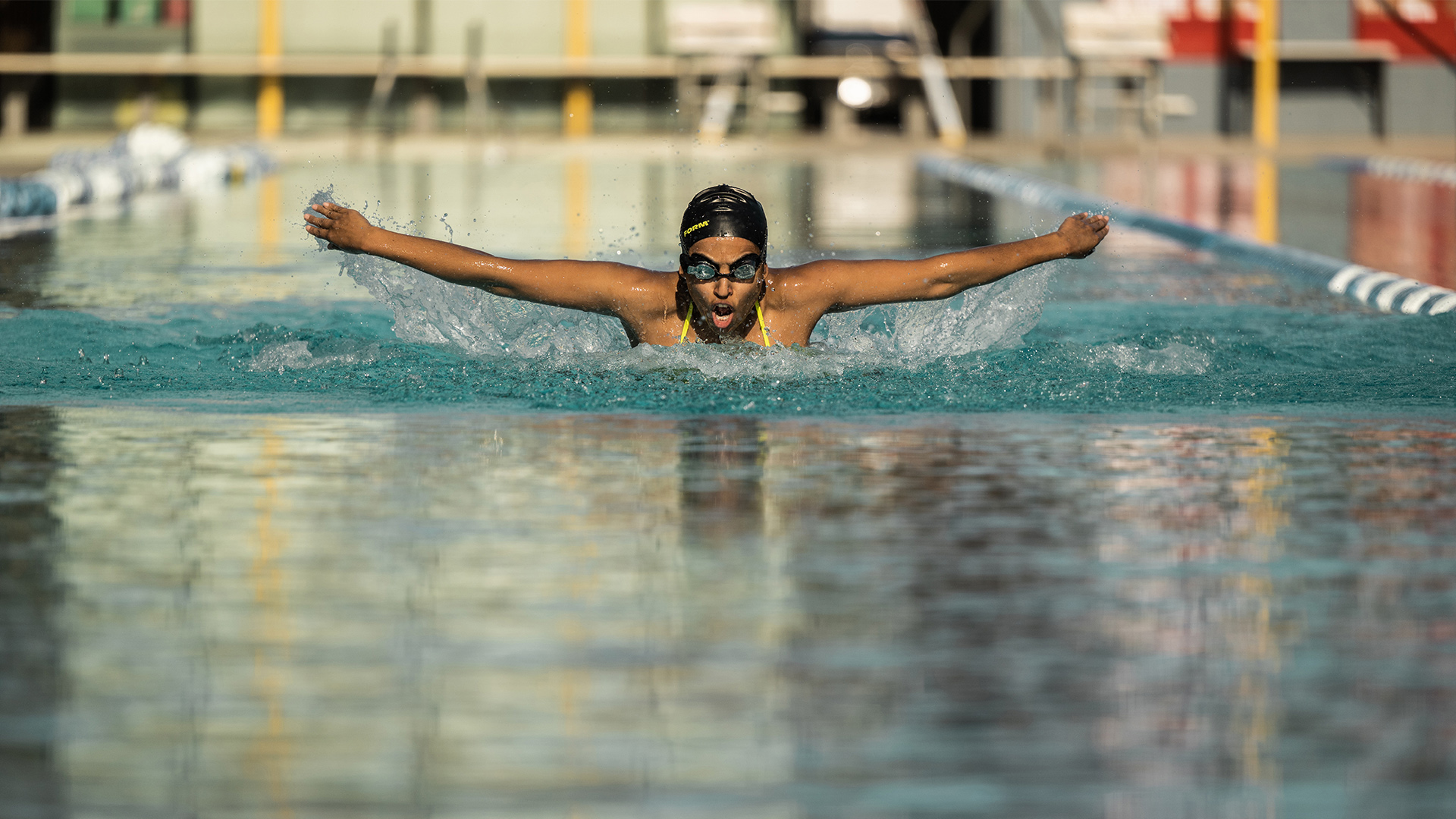
Taking your training to the next level
If you find you are getting into a nice flow with swimming, it’s probably time to mix up your workouts throughout the week.
“For a typical training week, I like to cycle through different intensities to ensure that I am getting the most out of my training, and touching every base throughout the week,” Brian explains.
This is what a typical week could look like:
Workout 1: Aerobic Focused
- Warm-Up (10 Minutes):
- 2 x 100m Easy Choice (Swimming any stroke that you want) @ 2:30
- 4 x 50m Easy Freestyle, with Fins @ 1:15 Holding a nice long stroke
- Main Set (30 Minutes), All freestyle, holding a steady pace the whole way:
- 4 x 50 @ 1:15
- 2 x 100 @ 2:30
- 2 x 200 @ 5:00
- 2 x 100 @ 2:30
- 4 x 50 @ 1:15
- Cool down (5 Minutes):
- 2 x 100 with 30 seconds rest in between. 1 Freestyle, 1 Not Freestyle
Workout 2: Threshold Focused
- Warm-Up (10 Minutes)
- 8 x 50 Freestyle on 1:15
- Odds = Easy, Long Swimming
- Evens = Building so the end of the 50 is faster than the start
- Main Set (30 Minutes)
- 3 Rounds of the following set:
- 3 x 100 Strong Freestyle @ 2:20
- 2 x 50 Easy Freestyle @ 1:30
- Cool Down (5 Minutes)
- 2 x 100 with 30 seconds rest in between. 1 Freestyle, 1 Not Freestyle
Workout 3: Speed Focused
A workout with higher intensity requires more time for warm-up and for warm-down to ensure proper recovery. Doing speed workouts in a short course (25 metre) is ideal.
- Warm Up (16 Minutes)
- 1 x 200 @ 5:00, Your Choice of Stroke
- 2 x 100 Freestyle @ 2:30, the second 50 faster than the first 50
- 3 x 50 Freestyle @ 1:30, the first 15 metres as fast as you can go, easy the rest of the way
- 1 x 50 Choice @ 1:30, All easy swimming
- Main Set (21 Minutes)
- 3 Rounds of the following set:
- 5 x 25 Freestyle as fast as you possibly can @ 1:00
- 1 x 75 Easy Choice Swimming @ 2:00
- Warm Down (8 Minutes):
- 6 x 50 Freestyle @ 1:20, Easy long swimming after a high intensity set
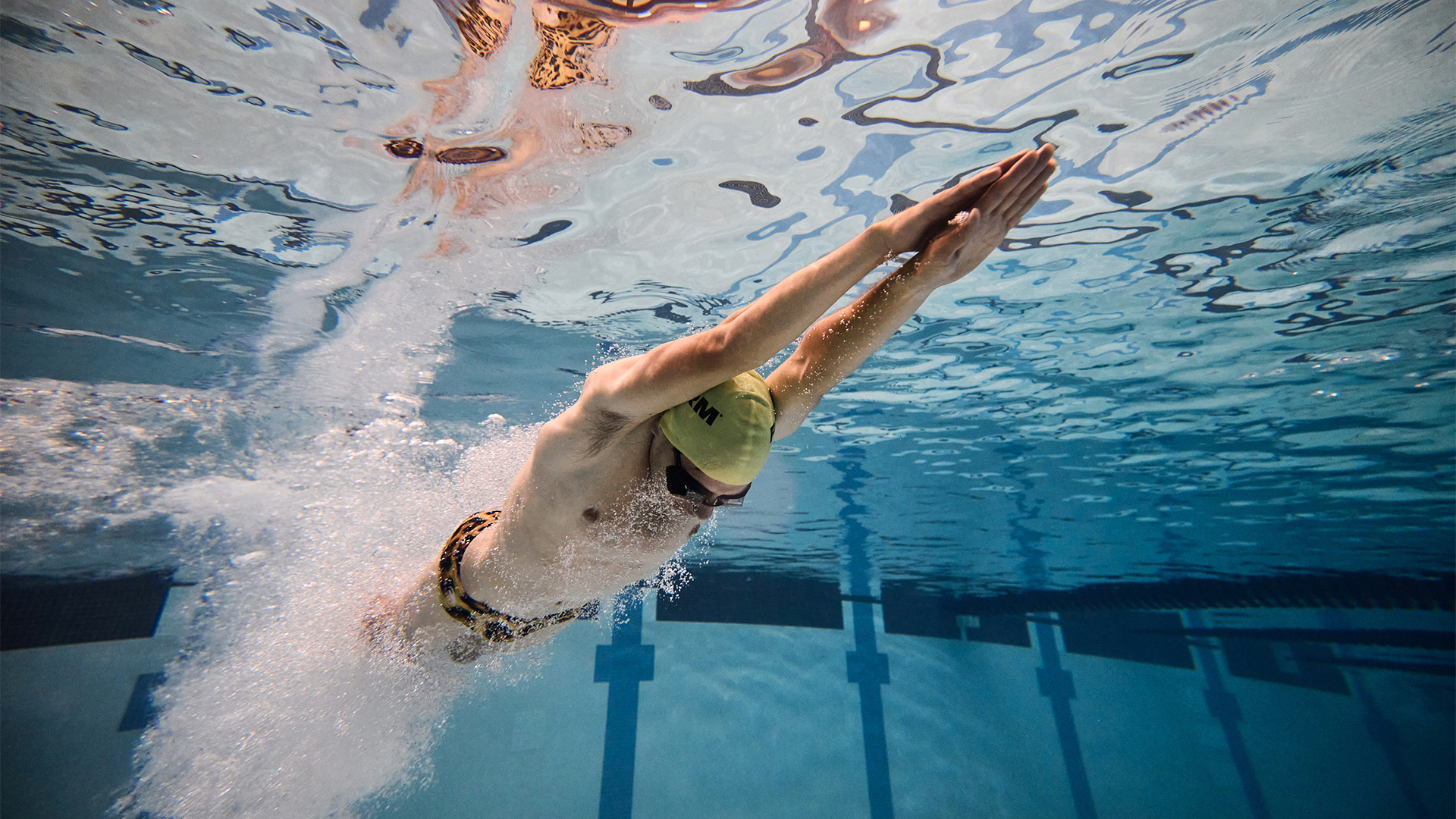
Get the kit you need to succeed
Thankfully, swimming is one of the few sports and fitness endeavours that requires minimal equipment. A pair of trunks or swimming costume, a water bottle and membership to your local pool is really all you need.
“If you are looking to advance your training, purchasing a pair of fins can help a lot. Fins will let you strengthen your legs as you swim, allow you to swim easier when you want to slow down to focus on your technique, and allow you to reach max speeds that would not be possible without them,” Brian says.
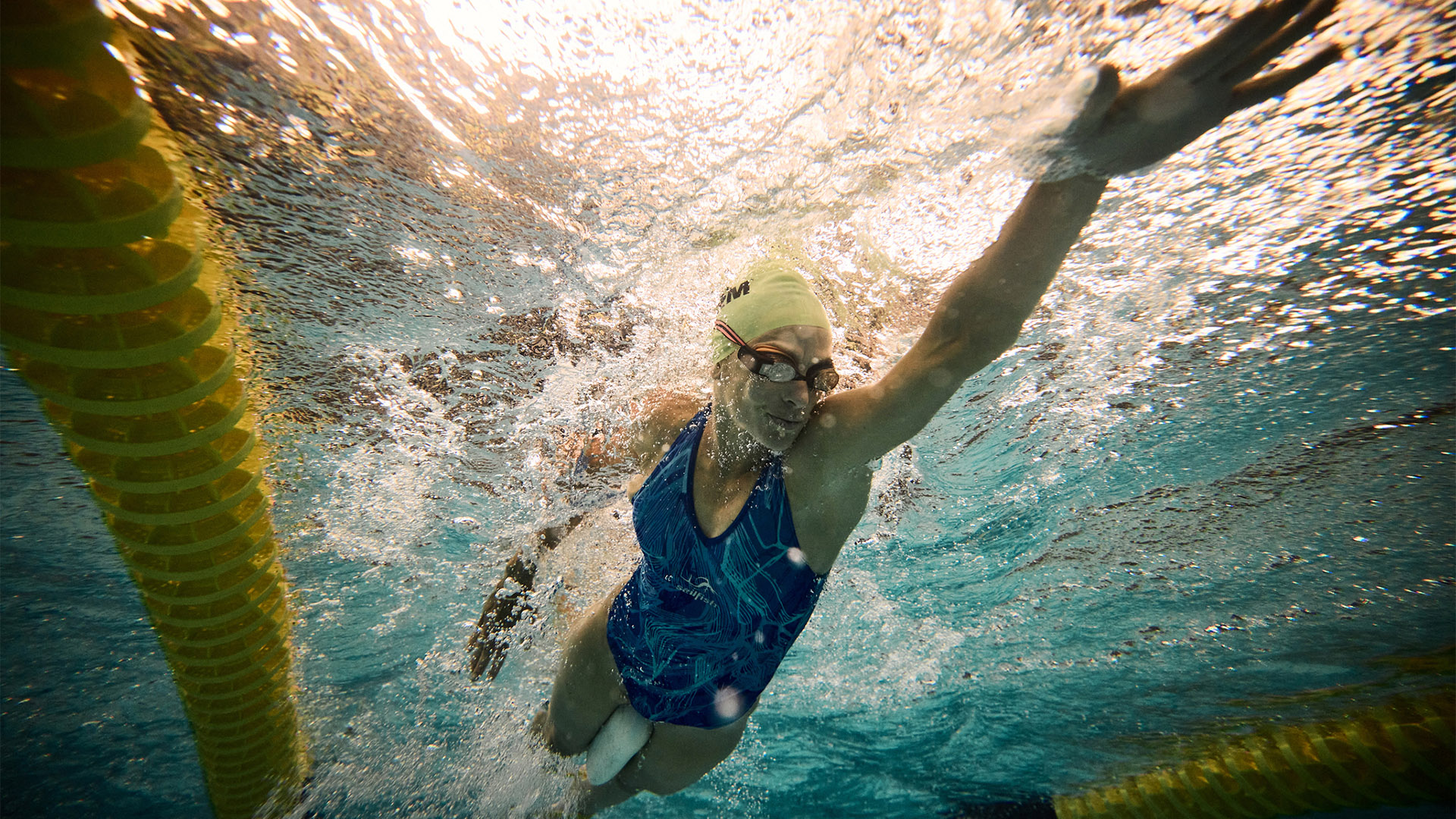
Make sure you fuel properly
Any new fitness regime will have an impact on your body and you will likely feel some muscle soreness and general lethargy if you’re going hard at a new sport or activity. Eating the right things before and after your swim can really help.
“While it's not optimal to eat a lot immediately before any activity, some swimmers can be particularly sensitive once they are floating horizontally on the water, which makes some swimmers very uncomfortable or worse. The old adage of 'don't swim for 30 minutes after you eat' holds some truth to it, although some will be more sensitive than others,” Brian says.
With that in mind, make sure you have a healthy breakfast at least an hour before you swim, which includes slow release carbohydrates, such as porridge oats, as well as fresh fruit for the energy boost.
In addition to this, make sure you stay hydrated during your swim session. “On land, you can feel your sweat, but in the water, your sweat gets immediately washed away, so swimmers vastly underestimate how much water they lose during a training session,” Brian explains.
“Watered down gatorade or juice are two options before and during a workout to ensure that you are staying hydrated,” he adds.
Post-workout, especially for higher intensity training, it is very important to have some form of protein (in addition to fluids) in order to recover optimally.
The smaller muscles used in swimming (versus the larger ones used for running and cycling) need the protein to help recover and prevent injury, especially if you are ramping up your volume.
“Chocolate milk has been a classic post-swimming recovery drink for good reason as it checks both boxes,” Brian reveals.







